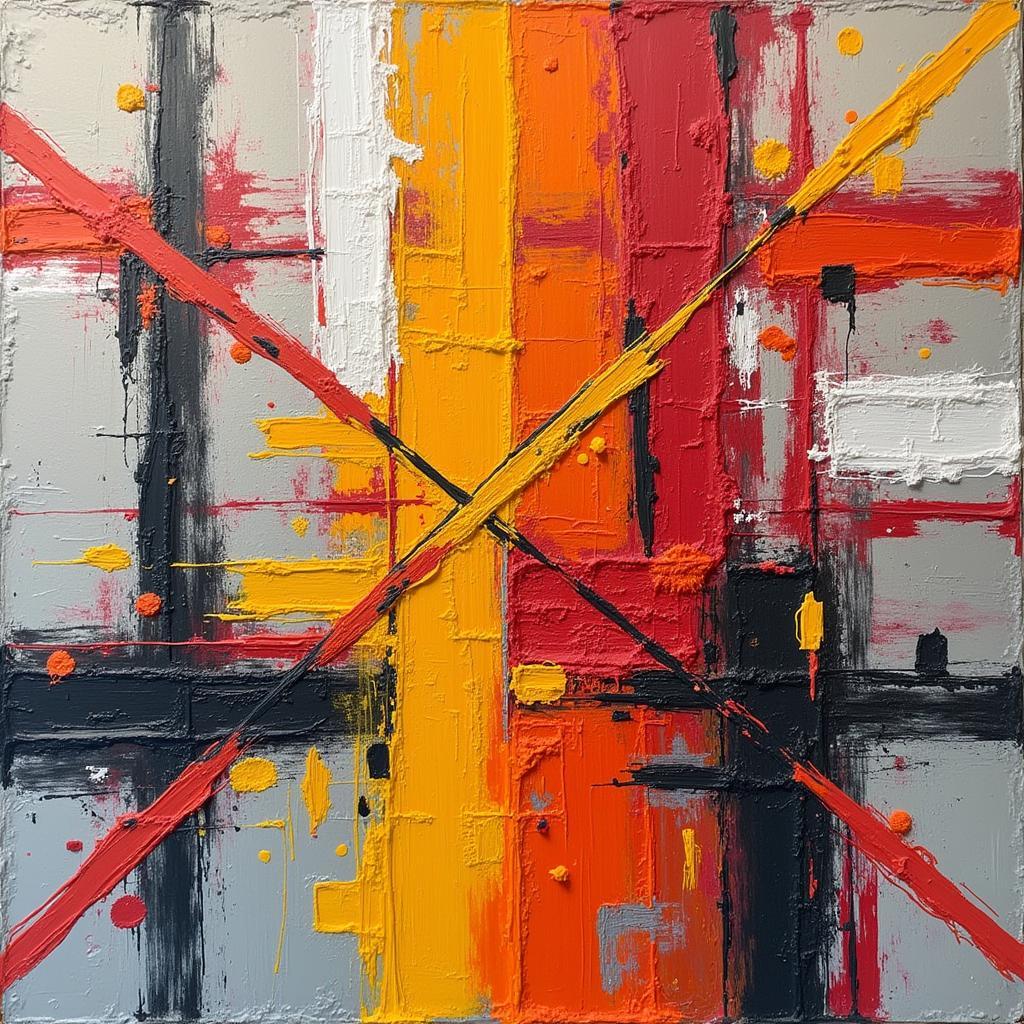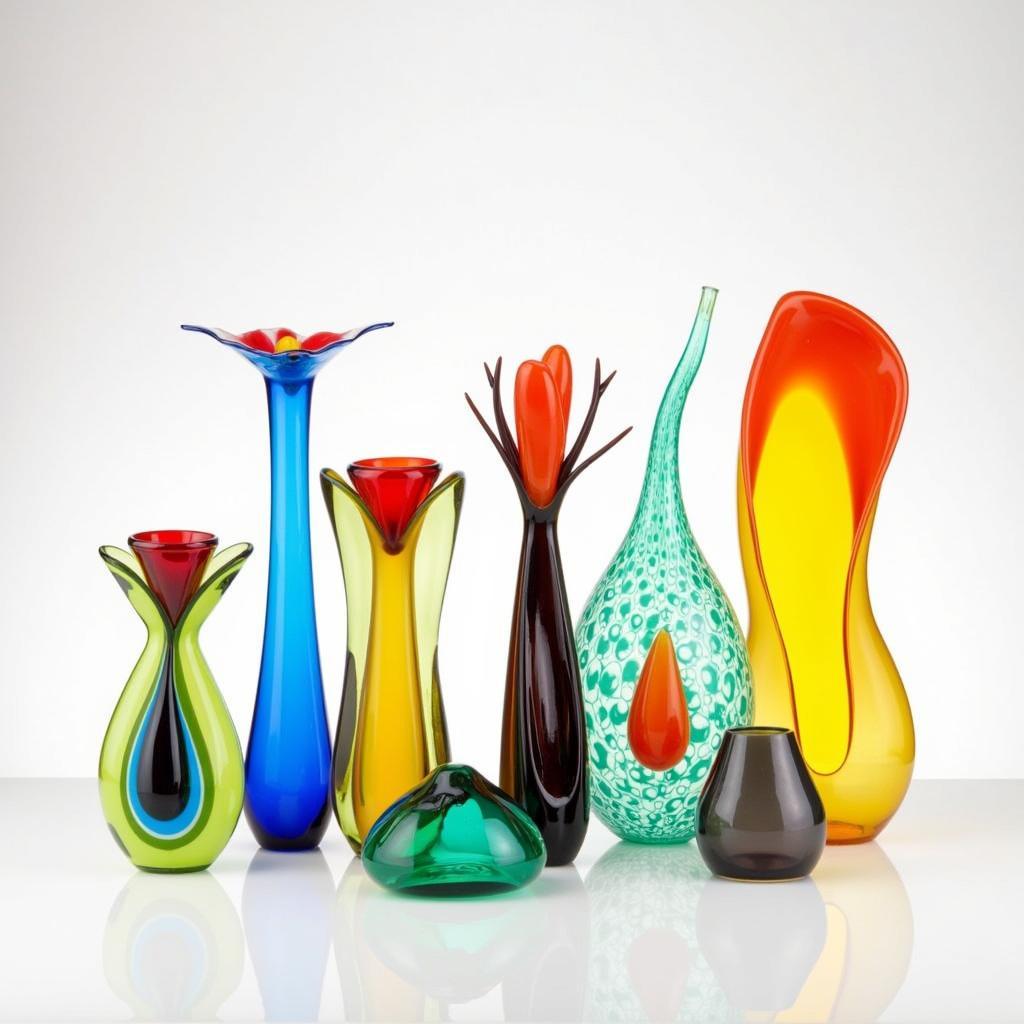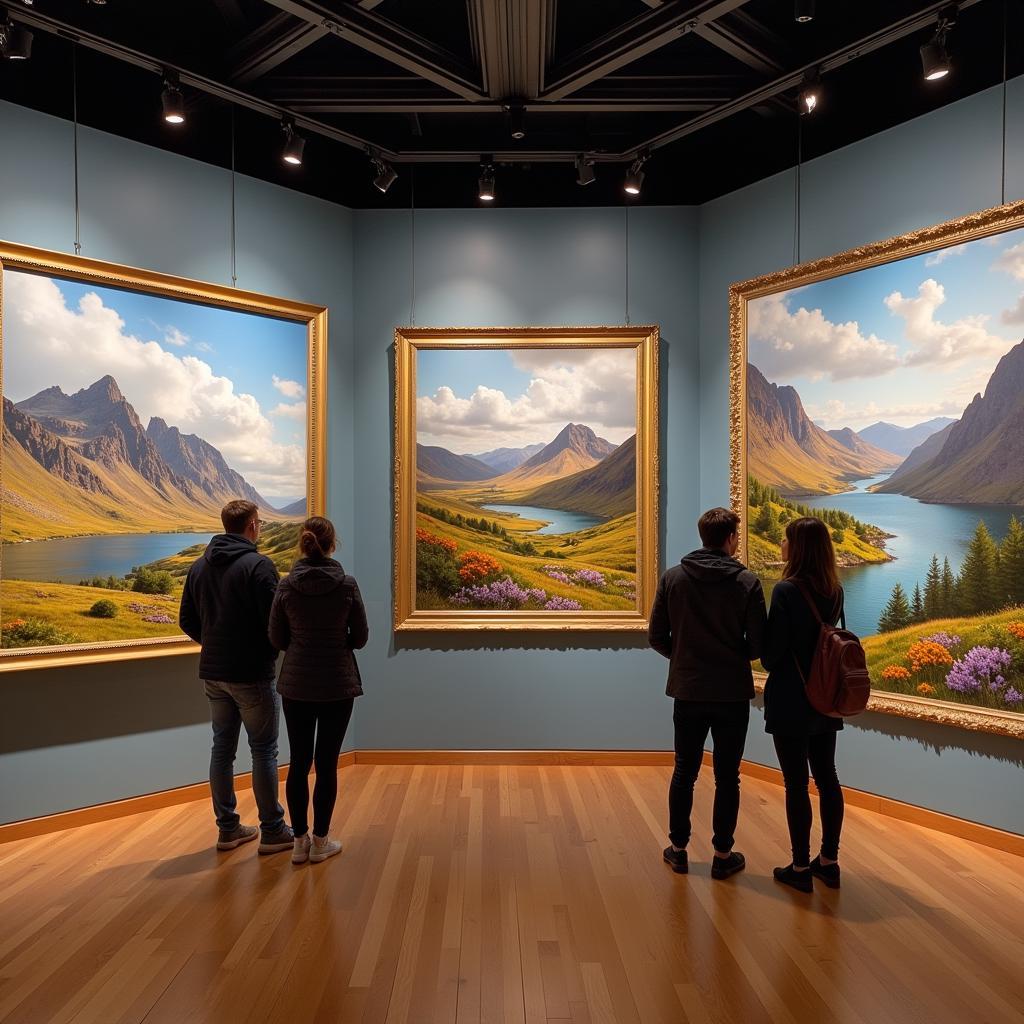Exploring the Dynamic World of Abstract Art Lines
Abstract Art Lines are more than just strokes on a canvas; they’re a visual language, a powerful tool for expressing emotions, ideas, and concepts beyond the representational. From the delicate whisper of a fine line to the bold statement of a thick, textured stroke, lines in abstract art hold the key to unlocking a world of creative possibilities. They invite us to step beyond the literal and engage with art on a deeper, more intuitive level. After exploring this fascinating subject, perhaps you might be inspired to create your own art martini?
The Power of Lines in Abstract Art
Lines are the fundamental building blocks of abstract art. They can define shapes, create movement, and evoke a wide range of emotions. A simple, straight line can convey stability and order, while a curved line can suggest fluidity and grace. Intersecting lines can create tension and dynamism, while parallel lines can evoke a sense of calm and harmony. The artist’s choice of line type, thickness, and direction all contribute to the overall impact of the artwork.
Understanding Different Line Types
Different types of lines can evoke different emotions and create various visual effects. A jagged, broken line might convey chaos or anxiety, while a smooth, continuous line might suggest peace and tranquility. Think of the energetic, almost frenetic lines in Jackson Pollock’s drip paintings, contrasted with the serene, contemplative lines in Mark Rothko’s color field paintings. Each artist’s unique use of line contributes to their distinct style and artistic voice.
Creating Depth and Dimension with Lines
Lines can also be used to create the illusion of depth and dimension in a two-dimensional artwork. By overlapping lines, varying their thickness, or using converging lines, artists can create a sense of perspective and space. This allows them to build complex compositions that draw the viewer’s eye and create a sense of movement and energy within the artwork. Imagine the implied depth and perspective in Wassily Kandinsky’s compositions, achieved through his masterful use of intersecting and overlapping lines.
Exploring Line and Composition in Abstract Art
The arrangement of lines within an abstract artwork is crucial to its overall impact. The composition, or how the elements are arranged, dictates how the viewer’s eye moves across the piece and how they interpret the artwork. A balanced composition can create a sense of harmony, while an asymmetrical composition can create tension and dynamism. Considering your wall art collection? Large floral art prints offer a unique way to incorporate lines into your home decor.
The Role of Color and Texture
While lines are the foundation of many abstract artworks, color and texture play equally important roles. Color can enhance the emotional impact of the lines, while texture can add depth and complexity to the artwork. The interplay of these elements can create a rich and engaging visual experience for the viewer.
 The Interplay of Line, Color, and Texture in Abstract Art
The Interplay of Line, Color, and Texture in Abstract Art
“Abstract art is not about what you see, but what you feel,” says renowned art critic, Amelia Dubois. “Lines are the conduits of that feeling, the pathways through which the artist communicates their inner world to the viewer.”
Finding Inspiration in the Everyday
Inspiration for abstract art lines can be found everywhere, from the natural world to the urban landscape. The intricate patterns of leaves, the jagged edges of a cityscape, or the flowing curves of a river can all serve as starting points for abstract compositions. Perhaps the shimmering lines of art glass Christmas trees could spark an idea?
Creating Your Own Abstract Art with Lines
Creating abstract art with lines is a rewarding and accessible form of artistic expression. Whether you’re a seasoned artist or just starting out, experimenting with different line types, colors, and compositions can lead to unexpected and exciting results. Don’t be afraid to break the rules, explore new techniques, and let your intuition guide you.
Tools and Techniques
There’s no right or wrong way to create abstract art with lines. You can use any medium you feel comfortable with, from pencils and pens to paint and digital tools. Experiment with different brushes, tools, and surfaces to discover new possibilities. Even exploring unconventional mediums like AI tickling art can open up exciting avenues for artistic expression.
“The beauty of abstract art is that there are no limitations,” says emerging artist, David Chen. “You can create anything you can imagine, using lines as your primary tool.”
Conclusion
Abstract art lines are a powerful means of artistic expression, capable of conveying a wide range of emotions and ideas. By understanding the different types of lines, their impact on composition, and their interplay with color and texture, you can unlock the potential of this dynamic art form and create your own unique masterpieces. The journey of exploring abstract art lines is an ongoing exploration, a constant dialogue between the artist and the viewer.
FAQ
- What is abstract art?
- What are the different types of lines used in abstract art?
- How can lines create depth and dimension in abstract art?
- What is the role of composition in abstract art?
- How do color and texture interact with lines in abstract art?
- Where can I find inspiration for abstract art lines?
- What tools and techniques can I use to create my own abstract art with lines?
Need some inspiration for lines in art? Check out surfer wall art for dynamic and flowing linework.
For further assistance, please contact us at Phone Number: 02462573573, Email: danteum@gmail.com or visit us at Savico Megamall, 7-9 Đ. Nguyễn Văn Linh, Gia Thụy, Long Biên, Hà Nội 10000, Việt Nam. We have a 24/7 customer support team.



